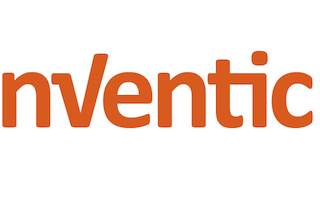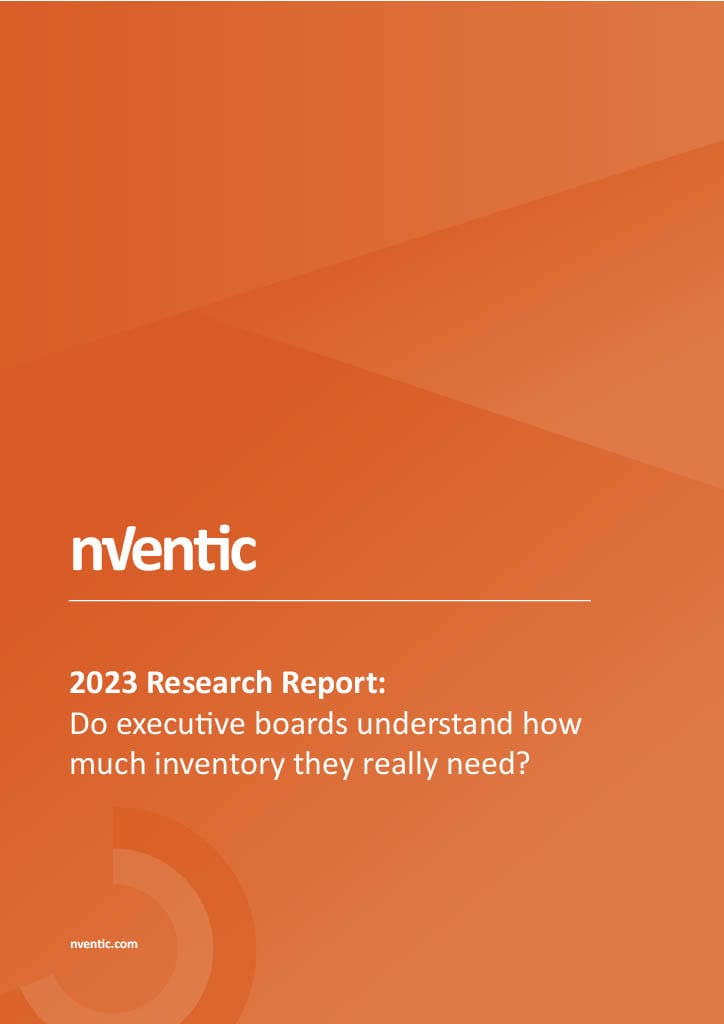
Insights
All of our insights below are available free and without registration. If you would like to sign up to our content email list, please find the sign up details at the bottom of this page.
Fundamental inventory optimization concepts
What is inventory optimization
Inventory optimization is a commonly used phrase, often rather loosely. But what is true optimization and how should you take advantage of it?
Inventory optimization is a commonly used phrase, often rather loosely. But what is true optimization and how should you take advantage of it?
Getting your inventories in shape - a guide for CFO's
Optimizing inventory can unlock tremendous value. Here we provide a brief overview for Finance professionals, covering the benefits of inventory optimization as well as the key issues.
Optimizing inventory can unlock tremendous value. Here we provide a brief overview for Finance professionals, covering the benefits of inventory optimization as well as the key issues.
Bridging the gap between theory and practice in inventory management
Great work has been done in inventory optimization in the academic world, but how much is really used in practice? Here we set out our point of view, as well as explaining what nVentic is doing to bridge the gap.
Great work has been done in inventory optimization in the academic world, but how much is really used in practice? Here we set out our point of view, as well as explaining what nVentic is doing to bridge the gap.
The constantly unrealised potential
The opportunity presented by inventory optimization is very significant, but most organisations have under-exploited it. We explore 7 of the main reasons why this is the case and what needs to be done to overcome them.
The opportunity presented by inventory optimization is very significant, but most organisations have under-exploited it. We explore 7 of the main reasons why this is the case and what needs to be done to overcome them.
Practical inventory optimization approaches
The strategic management of inventory
Holding cost may not seem like a strategic lever, but it is a key tool that can be used to improve working capital. But how much is inventory holding cost? In this white paper we explore how to calculate it and how to use it to best effect.
Holding cost may not seem like a strategic lever, but it is a key tool that can be used to improve working capital. But how much is inventory holding cost? In this white paper we explore how to calculate it and how to use it to best effect.
The limitation of crystal balls in inventory management
It is easy to fall into the trap of thinking that a good forecast is all you need to optimize inventories. Here we show the limitations of relying on forecasts and the importance of other factors.
It is easy to fall into the trap of thinking that a good forecast is all you need to optimize inventories. Here we show the limitations of relying on forecasts and the importance of other factors.
The ultimate guide to reducing excess and obsolete inventory
No one likes excess and obsolete (E&O) inventory, but it is difficult to eliminate. Here we present a guide to the top 10 steps organisations can take to reduce E&O to a minimum.
No one likes excess and obsolete (E&O) inventory, but it is difficult to eliminate. Here we present a guide to the top 10 steps organisations can take to reduce E&O to a minimum.
The ultimate guide to safety stock
Safety stock is one of the most obvious targets for inventory optimization efforts, but most safety stocks are far from optimized. What options exist to get this key lever right and how should you build a roadmap to get there.
Safety stock is one of the most obvious targets for inventory optimization efforts, but most safety stocks are far from optimized. What options exist to get this key lever right and how should you build a roadmap to get there.
Essential inventory metrics
The ultimate guide to DIO
Days Inventory Outstanding (DIO) is a metric more familiar to Finance than Supply Chain, but it should be part of Supply Chain's balanced scorecard. What exactly is DIO and what does it tell us about supply chain performance?
Days Inventory Outstanding (DIO) is a metric more familiar to Finance than Supply Chain, but it should be part of Supply Chain's balanced scorecard. What exactly is DIO and what does it tell us about supply chain performance?
Supply chain service levels
Service levels are a vital concept for supply chain optimization, but are frequently misunderstood. Where does this confusion arise, what impact does it have on your supply chain, and what should you do about it?
Service levels are a vital concept for supply chain optimization, but are frequently misunderstood. Where does this confusion arise, what impact does it have on your supply chain, and what should you do about it?
Cover uncovered
Inventory cover is a very widely used metric but how helpful is it in driving improvement in inventory management? We argue that it could actually be holding you back.
Inventory cover is a very widely used metric but how helpful is it in driving improvement in inventory management? We argue that it could actually be holding you back.
Time horizons in inventory optimization
Having what you need on time is critical, but the impact of time horizons on how you analyse and ultimately manage your inventories is a frequently under appreciated topic. Here we explore what you need to know - and do - to make sure time is factored into your approach properly.
Having what you need on time is critical, but the impact of time horizons on how you analyse and ultimately manage your inventories is a frequently under appreciated topic. Here we explore what you need to know - and do - to make sure time is factored into your approach properly.
Current trends in inventory optimization
The environmental case for inventory optimization
Excessive inventories are not just bad for your bottom line and balance sheet, they also represent unnecessary waste. We discuss how improving your inventory management can reduce your organisation's environmental impact.
Excessive inventories are not just bad for your bottom line and balance sheet, they also represent unnecessary waste. We discuss how improving your inventory management can reduce your organisation's environmental impact.
The role of (artificial) intelligence in inventory optimization
AI is an area of great potential to help us manage difficult challenges like inventory optimization, but what is it and how should you be taking advantage of it to drive inventory optimization successfully?
AI is an area of great potential to help us manage difficult challenges like inventory optimization, but what is it and how should you be taking advantage of it to drive inventory optimization successfully?
Big pharma inventories
nVentic Big Pharma inventory benchmarking report 2023
The end of 2022 saw widespread shortages of several common medicines despite significant year on year inventory growth at the big manufacturers. Why don't high inventories prevent the shortages? We find out and look at other trends.
The end of 2022 saw widespread shortages of several common medicines despite significant year on year inventory growth at the big manufacturers. Why don't high inventories prevent the shortages? We find out and look at other trends.
Inventory write offs in pharmaceutical manufacturing
Billions of dollars' worth of medicines are destroyed unused each year by the manufacturers themselves. What are the causes of this scrap and can it be avoided, at least in part?
Billions of dollars' worth of medicines are destroyed unused each year by the manufacturers themselves. What are the causes of this scrap and can it be avoided, at least in part?
Would you like to receive more content like this, direct to your inbox? We publish white papers on a range of supply chain topics approximately once every one to two months. Subscribe below and we will notify you of new content. Unsubscribe at any time.
If you would like to request or suggest any topics for future insights from nVentic, please contact us.
Archived insights
Covid-19
Survival of the fittest
In the short-term, organisations must prioritise cash, champion transparency, match supply to demand as closely as possible and prioritise ruthlessly.
In the short-term, organisations must prioritise cash, champion transparency, match supply to demand as closely as possible and prioritise ruthlessly.
Back to normal
Now is the time to plan for a return of normality, whatever that might look like. Organisations need to leverage predictive analytics and stay agile, while preparing for a range of scenarios.
Now is the time to plan for a return of normality, whatever that might look like. Organisations need to leverage predictive analytics and stay agile, while preparing for a range of scenarios.
The new normal
Don't be fooled by wish-fulfilling prophecies, but do prepare yourself for whatever the future brings.
Don't be fooled by wish-fulfilling prophecies, but do prepare yourself for whatever the future brings.
Archive big pharma inventory benchmarks
nVentic Big Pharma inventory benchmarking report 2022
2021 may be remembered as the year of the vaccine, but it certainly wasn't the only thing going on in pharmaceutical supply chains. We look at the trends over the course of the year, including a deeper dive into how to read DIO benchmarks.
2021 may be remembered as the year of the vaccine, but it certainly wasn't the only thing going on in pharmaceutical supply chains. We look at the trends over the course of the year, including a deeper dive into how to read DIO benchmarks.
nVentic Big Pharma inventory benchmarking report 2021
After a full year of the Coronavirus pandemic, how have big pharma inventories held up? In our annual benchmark of the biggest pharmaceutical firms we consider how resilient the supply chain has been and what the prospects are for the coming years.
After a full year of the Coronavirus pandemic, how have big pharma inventories held up? In our annual benchmark of the biggest pharmaceutical firms we consider how resilient the supply chain has been and what the prospects are for the coming years.
Big pharma inventories in a time of coronavirus
Big pharma companies normally carry substantial inventories. But will this be a good approach to dealing with the extraordinary strains put on supply chains in 2020 by the global coronavirus pandemic?
Big pharma companies normally carry substantial inventories. But will this be a good approach to dealing with the extraordinary strains put on supply chains in 2020 by the global coronavirus pandemic?
nVentic Big Pharma inventory benchmarking report 2019
The pharmaceutical industry has a major opportunity to improve its inventory management and free up significant amounts of working capital. We benchmark 30 of the biggest pharmaceutical companies in the world on their inventory performance and consider some of the visible trends.
The pharmaceutical industry has a major opportunity to improve its inventory management and free up significant amounts of working capital. We benchmark 30 of the biggest pharmaceutical companies in the world on their inventory performance and consider some of the visible trends.
The inventory challenge for the pharmaceutical industry
Pharmaceutical supply chains are long, complex and sometimes fragile, but there seems to be a major opportunity to deliver benefits through inventory optimization. Here we explore some of the issues and suggest how best to proceed.
Pharmaceutical supply chains are long, complex and sometimes fragile, but there seems to be a major opportunity to deliver benefits through inventory optimization. Here we explore some of the issues and suggest how best to proceed.


